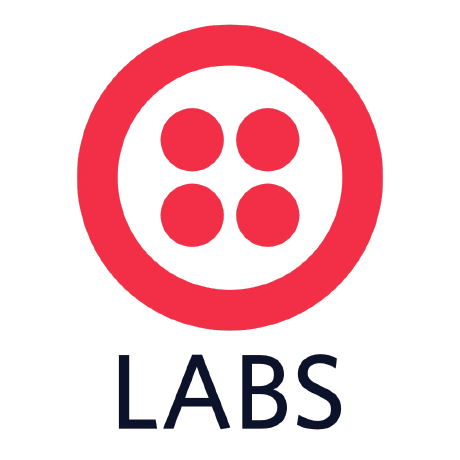Discover and explore top open-source AI tools and projects—updated daily.
ChatGPT-phone by  kevingduck
kevingduck
Voice chatbot for realistic AI cold calls
Top 94.3% on SourcePulse
This project provides a voice chatbot for practicing realistic cold calls using AI. It targets sales professionals and anyone looking to improve their phone communication skills by simulating conversations with an AI bot powered by Twilio, Deepgram, and OpenAI.
How It Works
The application leverages Twilio for phone call management, Deepgram for speech-to-text, and OpenAI's GPT-4 for natural language understanding and response generation. A Python script acts as the backend, receiving incoming calls via a Twilio webhook. This webhook is exposed to the internet using ngrok, which forwards requests to the local Python server. The script processes audio, sends it to Deepgram for transcription, feeds the transcript to GPT-4 for response generation, and then uses Twilio's TwiML to speak the AI's response back to the caller.
Quick Start & Requirements
- Install: Clone the repository, install dependencies via
pip install -r requirements.txt. - Prerequisites: Python 3.10+, Twilio API Key, OpenAI API Key (GPT-4), Deepgram API Key.
- Setup: Configure API keys in a
.envfile. Set up a Twilio number and configure its webhook to point to an ngrok URL. Runngrok http --hostname=coldcallgenius.ngrok.io 8080andpython3 start.py. Systemd services are recommended for resilience. - Links: GitHub Repository
Highlighted Details
- Utilizes GPT-4 for advanced conversational AI.
- Integrates Deepgram for potentially faster and more accurate speech-to-text.
- Provides instructions for setting up systemd services for continuous operation.
- Recommends an ngrok subscription for a static domain to improve reliability.
Maintenance & Community
The repository is maintained by kevingduck. No specific community channels or roadmap details are provided in the README.
Licensing & Compatibility
The README does not explicitly state a license. It is a demonstration project, and commercial use would require careful review of the underlying service terms (Twilio, Deepgram, OpenAI) and the project's own licensing if specified elsewhere.
Limitations & Caveats
The setup relies heavily on external services (Twilio, Deepgram, OpenAI, ngrok) and requires careful configuration of API keys and webhooks. The use of ngrok without a paid subscription means the public URL is temporary, necessitating a paid plan or alternative hosting for persistent availability. The project is presented as a demo, and production-readiness is not guaranteed.
1 year ago
Inactive

 nkasmanoff
nkasmanoff Adri6336
Adri6336 Zaki-1052
Zaki-1052 labteral
labteral openai
openai bolna-ai
bolna-ai twilio-samples
twilio-samples twilio-labs
twilio-labs yakGPT
yakGPT cogentapps
cogentapps TheExplainthis
TheExplainthis fuergaosi233
fuergaosi233